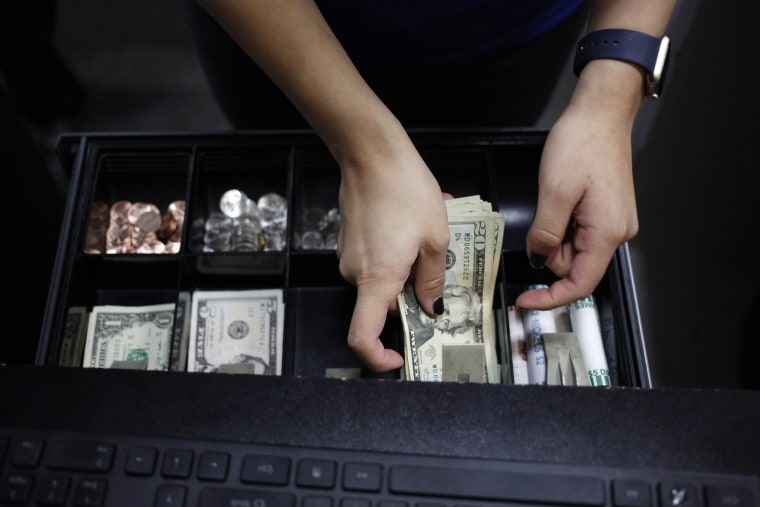In its new Economic Policy Survey, the National Association for Business Economics found that corporate America thinks the Fed should be moving faster to rein in inflation.
Nearly 4 in 5 survey respondents expect inflation to stay above 3 percent through the end of next year, including 36 percent who consider it “very likely” that inflation will be higher than it should be through the end of 2023. That is informing executives’ expectations about their future costs, and it has ramifications for decisions about setting prices, hiring and wages, and investing in people, technology and equipment.
“I think people tend to extrapolate the current environment far into the future, and with inflation, it is difficult to know when things will turn around. They seem to keep getting worse,” said Melissa Brown, the global head of applied research at the financial analytics firm Qontigo.
At the economics association’s policy conference Monday, Federal Reserve Chair Jerome Powell acknowledged the elephant in the room, using more blunt terms than he had in the past.
“Inflation is much too high,” he said in prepared remarks. “There is an obvious need to move expeditiously to return the stance of monetary policy to a more neutral level.” Powell also said the Fed might consider interest increases larger than a quarter of a percentage point, the increment by which it usually raises rates.
Russia’s invasion of Ukraine has added fuel to the inflation fire. More expensive oil, fertilizer and other commodities are contributing to higher costs for food, transportation and other expenses consumers face. It's also creating higher costs for manufacturers and some service industries, like travel.
A slim plurality of 47 percent of survey respondents expect the geopolitical volatility to shave more than half a percentage point off worldwide economic output this year, including 8 percent who expect global gross domestic product to fall by more than 1 percentage point as a result. And close to 80 percent of respondents said Russia’s invasion of Ukraine will worsen supply chain bottlenecks.
“The reasons that are causing inflation are not going to go away soon. One is the supply chain. There are still about 50 ships sitting off L.A., [and] delivery times are still getting worse,” said Dan North, a senior economist at Euler Hermes North America.
An analyst for the survey, Ken Simonson, the chief economist for the Associated General Contractors of America, said: “This is going to put added pressure on companies, along with the difficulty of filling orders. At this point, it’s going to put additional pressure on prices.”
Companies also have to contend with scarcer and more expensive labor, as well as components and raw materials. “The other thing that’s not going to disappear soon is the labor shortage,” North said. Some far-reaching demographic changes, like a drop in immigration and the retirement of baby boomers, will keep the supply of workers tight for the foreseeable future.
“As long as customers keep streaming through the doors, many employers still continue to express intense demand for workers,” said Julia Pollak, the chief economist at ZipRecruiter, who commented on the latest Job Openings and Labor Turnover Survey, known as JOLTS.
“The most recent number from the JOLTS report and the jobs report suggest this is the tightest job market ever,” Pollak said.
Just 214,000 workers filed initial jobless claims last week, and layoffs are hovering near record lows. Economists say that will help sustain workers’ wage gains — but whether those gains will be able to surpass, or even keep pace with, rising prices is far less certain.
“So far, inflation is outstripping wage growth, but not for everybody,” Pollak said.
The good news is that corporate balance sheets have held up well — surprisingly so, in some cases — two years into the coronavirus pandemic. The labor shortage has prompted investments in equipment and technology related to automation and other means for improving productivity — which can help offset the higher wages companies have been paying to compete for workers.
“I don’t see that the expected further rise in interest rates and expected continued inflation is yet at a point to choke off corporate investment,” Simonson said.
Companies have been able to absorb or pass on their higher costs to customers without much pushback, but experts warn that there are limits to how much more Americans are willing, or able, to pay for goods and services.
“We are already seeing rumblings of people feeling that corporations are taking advantage of the situation, thinking they are raising prices to boost profits but not boosting wages, for example,” Brown said. “Companies will need to be careful they don’t price themselves out of customers.”
Although households are still sitting on historically high levels of cash, the cushion is rapidly shrinking, particularly for lower-income workers and families. And the momentum in consumer spending depends on people being able to get and keep jobs.
“As long as we are seeing a strong economy and steady or rising employment, consumers can probably hold on for a while,” Brown said, but there is the sense that that is a fragile balance, especially as interest rates rise and Americans have to pay more to borrow as well as spend money.
“There is a fine line between fighting inflation and causing a recession that the central banks are walking,” she said.
